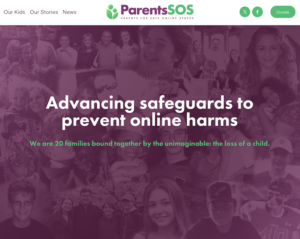The Safe Schools Policy – Best Practice Standards for Screens and Radiation was emailed to Canada’s Prime Minister and Canadian provincial Ministers of Health and Education, as well as Health Canada and The Council of Education Ministers, Canada on March 26, 2017 for comment and consideration (click here to see replies).
Safe Schools Policy – Best Practice Standards for Screens and Radiation
By Cris Rowan, Dr. Lennart Hardell, Tarmo Koppel, Sveinn Kjartansson & Stella Sæmundsdóttir
The past decade was marked by rising use of mobile technology by children in homes and schools, with studies showing concurrent decline in child physical1,2 and mental health3. One in three children enter school developmentally vulnerable4, one in four are obese or overweight5,6, one in seven have a diagnosed mental illness7, and one in ten are addicted to technology8. As problematic behaviors escalate and classroom management becomes increasingly difficult, schools continue to increase unmanaged student technology use. Safety standards for children in schools regarding screen time and wireless radiation either do not exist, or do not concur with current scientific evidence9. There are no studies which demonstrate wireless radiation endemic in mobile technology is safe for humans, with mounting research now indicating harm10. Cancer incidence in teens has risen 25% over the past 38 years11. The rapidity of child development poses increased risks for children, indicating immediate measures be taken in school environments to protect children. This Safe Schools Policy will serve as an education industry benchmark standard in ensuring productive and sustainable futures for all children.
| Safe Technology Policy for Schools |
| 1. Prohibit all cell phones from school environments. 2. Replace wireless with wired technology; relocate cell phone towers. 3. Ensure literacy achieved grades K-3; prohibit all educational technology until grade 4. 4. Limit education technology duration to less than 1 hour/day; education technology content should pass ‘high quality research’ criteria. 5. Requirements for outdoor physical activity should increase relative to education technology use |
| Safe Technology Procedures for Schools |
| ACTION 1 – BAN CELL PHONES |
| Prohibit all cell phones from school environments. |
| Rationale |
| Use of cell phones in schools has risen steadily since their inception in 2010, and management of this technology by teachers is becoming increasingly problematic. Students are accessing inappropriate content on their cell phones including video games, pornography, Facebook, texting, sexting, and cyberbullying. Studies show multitasking (using multiple devices at one time) reduces student productivity12 and is harmful to physical and mental health13. Having a cell phone on the desk during class even though not in use, has been shown to reduce grades14, and 92% of students report that when studying, they prefer books to screens15. Cell phones emit what is now determined to be harmful radiation16 which is linked to cancer as well as problematic behaviours3 in children, with observed growing trend to diagnose and medicate17 these behaviors. Current research indicates that this ongoing and relentless screen and radiation experimentation on students in schools, needs to stop now. |
| ACTION 2 – GO WIRED |
| Replace all wireless devices including tablets, routers, cell towers, and blue tooth, with wired technology. Relocate cell phone towers away from school to a safe distance as defined by government occupational health and safety guidelines. |
| Rationale |
| In 2011 the International Agency for Research on Cancer at WHO categorized wireless radiation18 emitted from cell phones, tablets, routers, cell towers etc. as a Group 2B (possible) carcinogen. The U.S. Federal Drug Administration’s National Toxicology Program preliminary findings released in May 2016 showed increased incidence of cancer10 in male mice and rats following 10 hour/day wireless exposure. Recent systematic study of cancer epidemiology19 research demonstrated 1.33 times greater brain cancer risk with cell phone use greater than 10-year duration when low quality or biased studies are eliminated. Until proven safe, the Environmental Health Trust’s Precautionary Principle20 calling for removal of wireless radiation from schools must be applied. |
| ACTION 3 – ENSURE LITERACY |
| Ensure literacy achieved grades K-3; prohibit all educational technology until grade 4. |
| Rationale |
| Foundations for child development and learning include movement, touch, human connection, and nature. Technology use prohibits child engagement in these 4 factors, and consequently has proven to be detrimental to development and learning21. Education technology (edtech) is inadequate in achieving foundations22 for printing, reading, or math literacy which require sensory, motor and spatial activation. Should children achieve developmental foundations for literacy, self-regulation, social skills, and attention ability by the end of grade 3, approved and safe use of edtech is appropriate by grade 4. |
| ACTION 4 – EDTECH EVIDENCE |
| Edtech duration should not exceed 1 hour/day; content should pass ‘high quality research’ criteria. |
| Rationale |
| Countries with the highest PISA scores use no more than 1 hour of edtech per day (China, South Korea), and those with the lowest PISA scores use the most edtech23. Canada dropped out of the top ten PISA rankings in 2012, with no improvement in 2015 status. Edtech is not evidence based, and lacks proven outcomes24. Industry driven edtech studies which report positive outcomes, are rife with conflict of interest and bias resulting in misinterpretation and misrepresentation of data. Edtech requires reliable and reproducible government or university conducted studies which meet government determined ‘high quality research criteria’, and prove not only short term benefits but also long term efficacy to qualify for use in schools. |
| ACTION 5 – MOVE OUTSIDE |
| Requirements for outdoor physical activity should increase relative to education technology use. |
| Rationale |
| Edtech is sedentary, overstimulating and isolates students from their teachers and peers resulting in impaired development, sleep deprivation, mental illness, attention deficit, lack of self-regulation, and few social skills17. Counterbalance initiatives to use of edtech should include engagement in movement and nature activities. Research shows movement not only improves cardiovascular fitness, but also builds strong core needed for motor coordination, which in turn improves printing and reading literacy25,26. 45 minutes of exercise using equipment such as treadmill, bike, elliptical, and rowing machines prior to doing school work, have proven to improve grades, mood, attention, and ease of learning27. Access to as little as 20 minutes per day of “green space”28,29 found in nature, has proven to significantly reduce adhd and improve attention. Standing instead of sitting, outdoor class, gym station obstacle courses, and challenging teen playgrounds30 would effectively counterbalance edtech, and enhance development, behavior and learning. |
| Safe Schools Policy – Summary Statement |
| The ways in which we are raising and educating children with technology are not sustainable31. Children are using 7.5 hours/day and teens 9 hours per day of entertainment media,32, 33 which is 4-5 times the amount recommended by the American Academy of Pediatrics34. Experts continue to raise the alarm regarding children’s significant vulnerability to wireless radiation,35 yet schools continue to escalate use of unsafe and unmanaged education technology.36 At what point do schools, school boards, and education government become complicit in knowingly causing harm to children, and when does society stop using children as guinea pigs? Enact Safe Schools Policy – Best Practice Standards for Screens and Radiation now. It’s already too late. |
| Research References |
| 1. Houtrow, A. J., Larson K., Olson, L. M., Newacheck, P. W., Halfon, N. (2014). Changing Trends of Childhood Disability, 2001-2011. Pediatrics. Available at http://pediatrics.aappublications.org/content/early/2014/08/12/peds.2014-0594.abstract 2. Dunckley, V. L. (2014). Gray matters: too much screen time damages the brain. Psychology Today. Retrieved from: https://www.psychologytoday.com/blog/mental-wealth/201402/gray-matters-too-much-screen-time-damages-the-brain 3. Divan HA et al. Cell phone use and behavioral problems in young children. Journal of Epidemiology and Community Health. 2012, Jun;66(6):524-9. 4. Healthy Early Learning Partnership – Early Development Inventory Maps for British Columbia, University of British Columbia; retrieved on March 23, 2017 from http://www.edibc2016.ca/ 5. Public Health Agency of Canada. Canadian Best Practices Portal. Government of Canada. Retrieved on March 23. 2017 from: http://cbpp-pcpe.phac-aspc.gc.ca/public-health-topics/healthy-weights-children/ 6. Jackson, D. M., Djafarian, K., Stewart, J. & Speakman, J. R. (2009). Increased television viewing is associated with elevated body fatness but not with lower energy expenditure in children. American Journal of Clinical Nutrition, 89, 1031-1036. doi:10.3945/ajcn.2008.26746. 7. Waddell C. Improving the Mental Health of Young Children. Children’s Health Policy Centre, Simon Fraser University, Vancouver BC, Canada. 2007. Available at: http://childhealthpolicy.ca/wp-content/uploads/2014/06/14-06-17-Waddell-Report-2014.06.16.pdf. 8. Gentile D. Pathological Video-Game Use Among Youth Ages 8 to 18. Journal of Psychological Science. 2009; 3(2):1-9 9. Friesen, M. Canadians for Safe Technology. Wi-Fi in Canadian Schools: A Health and Safety Issue. Canadians for Safe Technology. November 28, 2015. Retrieved on March 23, 2017 from: http://oldsite.c4st.org/WiFiCanadianSchools 10. National Toxicology Program, U.S. Department of Health and Human Services. Report of Partial Findings from the National Toxicology Program Carcinogenesis Studies of Cell Phone Radiofrequency Radiation in Hsd: Sprague Dawley SD Rats (Whole Body Exposure). May 27, 2017. Retrieved on March 23, 2017 from: https://ntp.niehs.nih.gov/results/areas/cellphones/index.html 11. Burkhamer, J., Kriebel, D. & Clapp, R. (2017). The increasing role of adolescent cancer risk in the U.S. PLoS ONE 12(2): e0172986. doi:10.1371/journal.pone.0172986 12. Uncapher, M. R., Thieu, M. K. & Wagner, A. D. (2015). Media Multi-tasking and Memory: Differences in Working Memory and Long-term Memory. Psychonomic Bull Rev. DOI 10.3758/s13423-015-0907-3 13. Becker, M. W., Alzahabi, R. & Hopwood, C. J. (2012). Media Multi-tasking is Associated with Symptoms of Depression and Social Anxiety. Cyberpsychology, Behavior and Social Networking. 16(2). DOI: 1089/cyber.2012.0291 14. Rosen, L. (2012). Helping your children study amidst distracting technologies. Huffington Post. Retrieved on March 23, 2017 from: http://www.huffingtonpost.com/dr-larry-rosen/kids-and-technology_b_2101414.html 15. Robb, A. (2015). 92% of college students prefer reading print books to E-Readers. Retrieved on March 23, 2017 from: https://newrepublic.com/article/120765/naomi-barons-words-onscreen-fate-reading-digital-world 16. Carlberg, M. & Hardell, L. (2017). Evaluation of Mobile Phone and Cordless Phone Use and Glioma Risk Using the Bradford Hill Viewpoints from 1965 on Association or Causation. BioMed Research International. Vol 2017. Article ID 9218486, 17 pages. Retrieved on March 23, 2017 from: https://doi.org/10.1155/2017/9218486 17. Rowan, C. (2010). Unplug – Don’t Drug: A Critical Look at the Influence of Technology on Child Behavior with an Alternative Way of responding Other Than Evaluation and Drugging. Ethical Human Psychology and Psychiatry. 12 (1): 60-67. 18. World Health Organization – International Agency for Research on Cancer, Press Release No. 208, May 31, 2011. http://www.iarc.fr/en/media-centre/pr/2011/pdfs/pr208_E.pdf 19. Prasad, M., Kathuria, P., Nair, P., Kumar, A., Prasad, K. (2017). Mobile phone use and risk of brain tumors: a systematic review of association between study quality, source of funding, and research outcomes, Neurological Sciences. doi:10.1007/s10072-017-2850-8 20. Volkow, N. (2015). Best Practices with Wireless Radiation for Schools – A Review of Global Advisories. Environmental Health Trust. 21. Rowan, C (2013). The Impact of Technology on the Developing Child. Huffington Post. Retrieved on March 23, 2017 from: http://www.huffingtonpost.com/cris-rowan/technology-children-negative-impact_b_3343245.html 22. Rowan, C. (2013) Ten Reasons Why Handheld Devices Should be Banned for Children Under the Age of 12. Retrieved on March 23, 2017 from: http://www.huffingtonpost.com/cris-rowan/10-reasons-why-handheld-devices-should-be-banned_b_4899218.html 23. Organization for Economic Co-operation and Development – New approach needed to deliver on technology’s potential in schools. (2015). Retrieved from http://www.oecd.org/education/new-approach-needed-to-deliver-on-technologys-potential-in-schools.htm 24. Brown, E. A. (2017). Research lacks evidence on device use, apps for young children. Future of Ed Tech Newsletter. Retrieved on March 23, 2017 from: http://edtechenews.fetc.org/research-lacks-evidence-on-device-use-apps-for-young-children/ 25. Rowan, C. (2012). Children who don’t move, can’t learn. Moving to Learn blog. Retrieved on March 23, 2017 from: https://movingtolearn.ca/2012/children-who-dont-move-cant-learn 26. Braswell J, Rine R. Evidence that vestibular hypofunction affects reading acuity in children. International Journal of Pediatric Otorhinolaryngology. 2006; 70 (11): 1957-1965. 27. Ratey JJ, Hagerman E (2008). Spark: The Revolutionary New Science of Exercise and the Brain. Little, Brown and Company, New York. 28. Kuo FE, Faber Taylor A. Children with Attention Deficits Concentrate Better After a Walk in the Park. Journal of Attention Disorders. 2009; 12; 402: originally published online Aug 25, 2008. 29. Louv, R. Last child in the woods: Saving our children from Nature-Deficit Disorder. New York: Algonquin Books; 2005. 30. Rowan, C. (2013). Teen Playgrounds – Improving youth health, learning, behavior, and socialization. Moving to Learn Blog. Retrieved on March 23, 2017 from: https://movingtolearn.ca/2013/teen-playgrounds-improving-youth-health-learning-behavior-and-socialization 31. Rowan, C (2010). Virtual Child – The terrifying truth about what technology is doing to children. Sunshine Coast Occupational Therapy Inc. Press. Vancouver, BC Canada. 32. Common Sense Media. (2013). Zero to Eight: Children’s media use in America. 1-38. Retrieved from: www.commonsensemedia.org/research/zero-eight-childrens-media-use-america-2013. 33. Common Sense Media. (2015). Landmark Report: U.S. Teens Use and Average of Nine Hours of Media Per Day, Tweens Use Six Hours. 34. American Academy of Pediatrics. (2013). Children, adolescents, and the media: policy statement. Pediatrics, 132(5), 958-961. doi: 10.1542/peds.2013-2656. 35. American Academy of Pediatrics. (2013). Letter to Federal Communications Commission. Retrieved from: http://apps.fcc.gov/ecfs/document/view?id=7520941318. 36. CBC News. (March 22, 2017). Federal Budget 2017: $50 million over 2 years to teach Canadian children how to code. Retrieved on March 23, 2017 from: http://www.cbc.ca/news/politics/federal-budget-highlights-2017-1.4032898 |
| Authors and Contact Info |
| Cris Rowan BScOT, BScBI, SIPT. Pediatric Occupational Therapist and biologist. Presented at DDA conference. Clinical Instructor at Pacific University Portland Oregon for OT doctoral course on impact of technology on children. Institute for Digital Media and Child Development – Parental Education, Clinical Research CAOT Sensory Processing Disorder – BC Rep. Performed over 300 workshops for health and education professionals and parents. Publish numerous articles in international journals and presented at international conferences. Cris can be reached at crowan@zonein.ca.
Prof. Lennart Hardell is a professor in Oncology and cancer epidemiology at the University Hospital in Orebro, Sweden. Has his research contributed to the cancer classification of different agents such as TCDD, PCB, the herbicide Glyphosate, and radio frequency fields. Vice President of European Society of Environmental Health. Deputy of Ethical Committee at Uppsala. European Journal of Cancer Prevention Research Prize. Swedish Medical Research Council in molecular genetic epidemiology. 2011 IARC expert in classification of cell phone radiation carcinogenicity. Dr. Hardell can be reached at Lennart.hardell@orebroll.se. Tarmo Koppel, Tallin University of Technology. Materials Science, Electromagnetism, Health Economics. BSc, MA, PhD-candidate. Tarmo Koppel is an environmental health scientist. For the past three years Tarmo has been involved in European Union’s and Estonian electromagnetic fields legislation analysis and formulation as a national expert. His recent years in research have focussed on mobile communications (mobile networking) risk management issues. Tarmo can be reached at tarmo.koppel@ttu.ee. Sveinn S. Kjartansson and Stella Sæmundsdóttircoordinated the international conference Children Screen Time and Wireless Radiation held on Feb. 24, 2017 in Reykjavik Iceland, serve on the board for the Association of Parents of Pre-School Children, and co-own Iceland Luxury Tours. Sveinn has a BSc in computer science, is an entrepreneur in wireless technology and IT, and is an observer for the Reykjavik Education and Youth Committee. Stella’s academic background is in psychology, is an avid wireless research collator, and previous owned and managed a book store. Sveinn and Stella can be reached at sveinnk@gmail.com. |





3 Responses
Health Canada
From: Miruna Ionescu [mailto:miruna.ionescu@hc-sc.gc.ca] On Behalf Of CCRPB-PCRPCC
Sent: May 1, 2017 8:13 AM
To: Cris Rowan
Cc: CCRPB-PCRPCC
Subject: Re: Safe Schools Policy – Best Practice Standards for Screens and Radiation
Dear Ms. Rowan,
Thank you for your correspondence of March 26, 2017 submitted to Health Canada regarding your Safe Schools Policy. We recognize that your letter was addressed to the attention of the Federal-Provincial-Territorial Radiation Protection Committee and has been forwarded to the attention of the federal-provincial chairs of the Committee.
With respect to human exposure to radiofrequency (RF) energy from wireless devices, Health Canada monitors the scientific literature related to possible health effects, conducts research, and develops exposure guidelines such as the Limits of Human Exposure to Radiofrequency Electromagnetic Energy in the Frequency Range from 3 kHz to 300 GHz – Safety Code 6 (2015). Although the limits in Safety Code 6 are not device specific, they do set forth the maximum recommended level of exposure over the entire frequency range they cover. The actual RF exposure level for a given device would depend on the frequency used by that device.
Specific devices such as cell phones, smartphones, iPods, tablets, Wi-Fi and their associated infrastructure (e.g. telecommunication towers) are regulated by Innovation, Science and Economic Development Canada (ISEDC). To ensure that public exposures fall within acceptable guidelines, ISEDC has developed regulatory standards that include testing and labelling requirements which require compliance with the human exposure limits outlined in Safety Code 6 (2015). Any queries regarding compliance, testing procedures or labelling of the noted RF emitting devices should be directed to ISEDC (http://www.ic.gc.ca/eic/site/icgc.nsf/eng/h_07026.html).
Health Canada is aware of the work of the US National Toxicology program and has reviewed the study report, which states that there was a statistically significant increase in certain types of cancer among male rats exposed to cell phone signals over two years. The RF exposure levels tested in the study were 19 to 75 times higher than the human exposure limits established internationally and within Canada for whole body exposure for humans. Departmental officials will review the full published studies as they become available and will consider this new evidence alongside existing scientific knowledge in this area when assessing the possible health risks from exposure to RF fields.
The International Agency for Research on Cancer (IARC) has classified RF energy as “possibly carcinogenic to humans” (Class 2B). The IARC classification on RF energy reflects the fact that some (limited) evidence exists that RF energy may be a risk factor for cancer. However, the vast majority of scientific research to date does not support a link between RF energy exposure and human cancers. Health Canada is in agreement with both the World Health Organization and IARC that additional research in this area is warranted. Given the uncertainty associated with long-term heavy use of cell phones, Health Canada has issued precautionary advice to cell phone users informing them of practical ways they can reduce their exposure to RF EMF from cell phones (please refer here: https://www.canada.ca/en/health-canada/services/consumer-radiation/safety-cell-phones-cell-phone-towers.html)
Health Canada is committed to safeguarding the health and safety of Canadians by actively monitoring scientific research and collaborating with various international organization, partners, stakeholders, federal, provincial and territorial governments to ensure that Canadians are protected from adverse health effects from radiation emitting devices.
You may wish to visit the following links for more information:
Health Canada – RF Exposure Guidelines (Safety Code 6)
http://www.hc-sc.gc.ca/ewh-semt/consult/_2014/safety_code_6-code_securite_6/final_finale-eng.php
Safety Code 6 – Fact Sheet
http://www.hc-sc.gc.ca/ewh-semt/pubs/radiation/radio_guide-lignes_direct/safety_code_6_fs-code_securite_6_fr-eng.php
Health Canada – Radiofrequency Fields
http://www.hc-sc.gc.ca/ewh-semt/radiation/cons/radiofreq/index-eng.php
We hope you find this information helpful and thank you for the information which has been noted.
Sincerely yours,
Consumer & Clinical Radiation Protection Bureau (CCRPB)
Bureau de la protection contre les rayonnements des produits cliniques et de consommation
Ontario Minister of Education
From: Correspondence Services (EDU) [mailto:Correspondence.Unit@ontario.ca]
Sent: May 10, 2017 11:57 AM
To: Cris Rowan
Subject: Reply from the Minister of Education
Ms. Chris Rowan
CEO
Sunshine Coast Occupational Therapy Inc.
Zone’in Programs Inc.
Dear Ms. Rowan,
Thank you for your e-mail regarding the impact of technology on child development, behaviour, and learning and for sharing your safe schools and best practices document. I appreciate the opportunity to respond.
The well-being of all students remains a top priority of our government. An important part of supporting well-being, as well as inspiring confidence in publicly-funded education, is working to ensure that our schools and classroom environments are healthy and safe for all students.
Across Canada, the standards for protecting human health from wireless devices —like cell phones, and other sources of electromagnetic radiation— are established by Health Canada. In all areas accessible to the public, including schools, wireless devices are required to meet Health Canada’s exposure guidelines (Safety Code 6). Industry Canada is the federal regulator responsible for assessing whether such communications equipment complies with federal standards, and for approving it. I understand that Health Canada’s position is that the levels of radiofrequency energy emitted by wireless devices are typically well below the exposure limits set out in Safety Code 6.
Health Canada also provides additional guidance to concerned cell phone users so that they may take practical measures to reduce their exposure to RF energy. While there is no evidence that children and teenagers are at increased risks, Health Canada provides information to parents with respect to the use of cell phones.
The Ministry of Education has confidence that Health Canada has the scientific, technical, and public policy knowledge necessary to determine that the use of wireless devices in schools does not pose any adverse health risks to children, youth and adults.
Please note that district school boards and trustees have autonomy in making decisions about the use of wireless devices like cell phones and Wi-Fi in schools, and I am confident that each school board recognizes the importance of providing educators, parents, students, and members of the general public with opportunities for offering meaningful input. I know that thoughtful consideration is taken by boards and school leaders of the concerns raised on this matter.
Please be assured that the ministry takes the health and safety of students seriously, as well as its commitment to helping all Ontario students succeed and lead healthy, productive lives.
Thank you again for writing and sharing your concerns.
Sincerely,
Original signed by
Mitzie Hunter, MBA
Minister
Office of Prime Minister
From: Prime Minister/Premier Ministre [mailto:PM@pm.gc.ca]
Sent: May 5, 2017 9:14 AM
To: Cris Rowan
Cc: Jane Philpott
Subject: Office of the Prime Minister / Cabinet du Premier ministre
Dear Cris Rowan:
On behalf of the Right Honourable Justin Trudeau, Prime Minister of Canada, I would like to acknowledge receipt of your correspondence enclosing the document you co-wrote entitled Safe Schools Policy – Best Practice Standards for Screens and Radiation. I regret the delay in replying.
Please be assured that your correspondence has been carefully reviewed. As you may know, education falls primarily under the responsibilities of the provinces. Therefore, if you have not already done so, you may also wish share your concerns with the appropriate provincial authorities.
That being said, I have taken the liberty of forwarding your email to the Honourable Jane Philpott, Minister of Health, for her information and consideration.
Thank you for writing to the Prime Minister.
Yours sincerely,
R. Olshansky
Executive Correspondence Officer